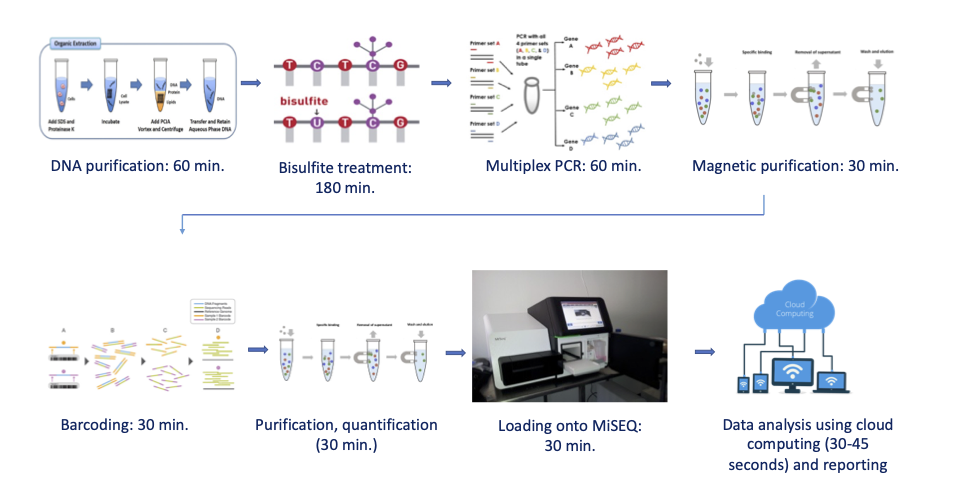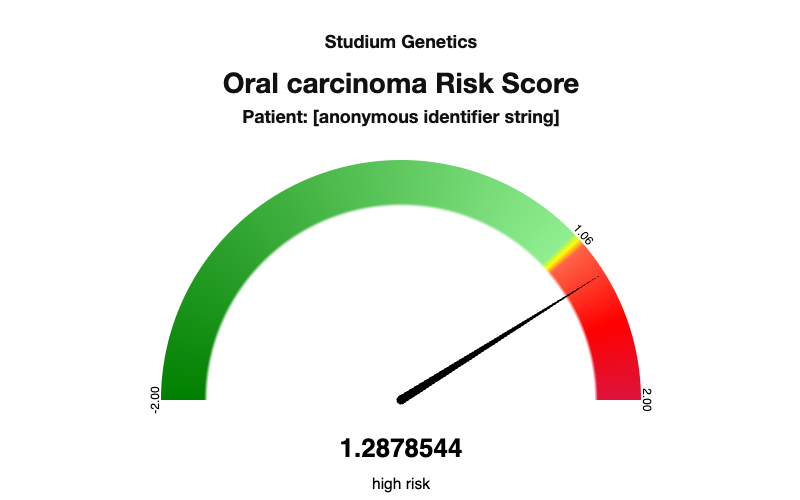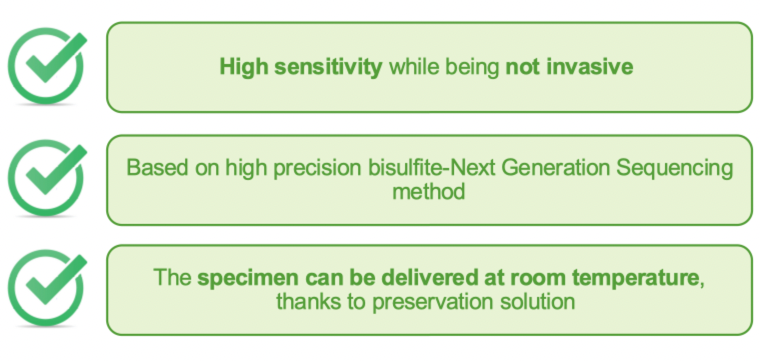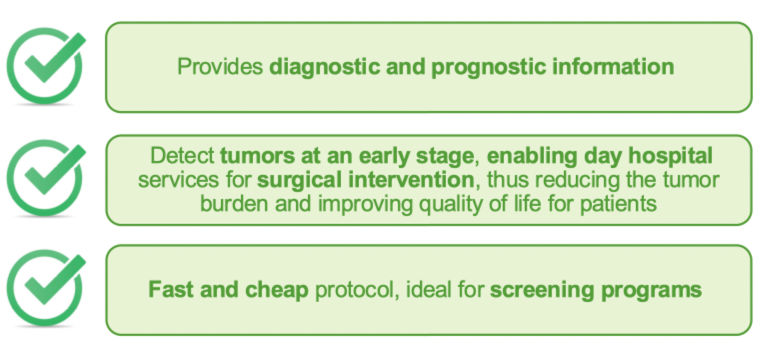Our Revolutionary Technology

Studium Genetics has developed and patented the Oral Carcinoma Risk Algorithm (SG-OCRA™) method for the early detection of patients at risk to develop Oral Squamous Cells Carcinoma (OSCC) and its precursor, high grade dysplasia, by quantitative DNA methylation analysis using bisulfite Next Generation Sequencing (NGS) in exfoliating brushes of oral mucosa.
The markers involved in this invention are a set of 13 genes in which the aberrant methylation pattern is indicative of severe dysplasia and/or OSCC
The DNA methylation analysis of 13 genes is eventually used to perform a calculation by using an internally developed and patented algorithm that generates a score. This will help physicians to identify those patients at risk for oral cancer.
In a nutshell
Our SG-OCRA™ method step-by-step

- Identification of suspicious lesion • brushing and specimen collection from the oral mucosa • specimen shipment.
- DNA purification.
- Bisulfite treatment to convert unmethylated cytosine into uracil.
- Target enrichment and barcoding by two PCR steps.
- PCR purification by magnetic beads and quantitation.
- Loading the library onto MiSEQ (up to 96 samples in parallel).
- Bioinformatics analysis with cloud computing based on linear discriminant analysis (LDA) methods for risk score calculation (proprietary algorithm SG-OCRA™).

Who we target
- People over 40 who regularly drink or smoke
- Patients showing leukoplakia, erythroplakia, oral lichen planus or any suspected oral lesion
- Patients previously treated for OSCC during follow-up every 3-6 months from primary surgery
The collection of the sample is completely painless and will only take a few minutes. Since the beginning of 2023 patients will be able to request a test from their trusted healthcare professionals:
- Dentists
- Otolaryngologists
- Maxillofacial surgeons
- Hospitals and clinics
- Authorised laboratories
Unique benefits of our groundbreaking technology


The collection kit allows to store the specimens at room temperature; the preservation solution eliminates cold-chain and ensures DNA/RNA stability during sample transport at ambient temperatures.
No alternative technology currently exists in the market for OSCC early detection. Despite a number of different approaches have been tested in the past (e.g. exfoliative cytology, optical diagnostic method etc.) none of them has been validated in clinical samples and implemented in clinical practice.
